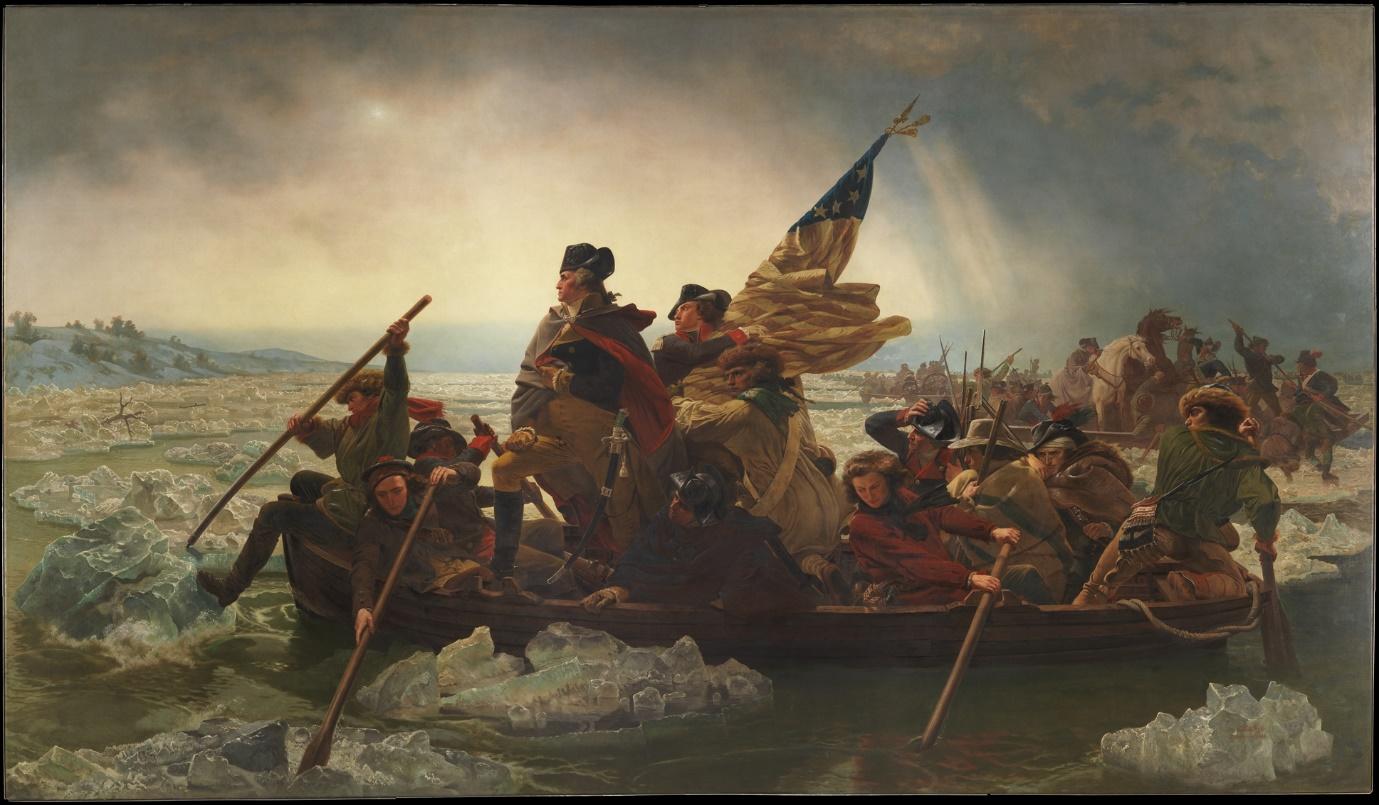Washington Crossing the Delaware is a piece by German-American painter Emanuel Leutze (1816-1868), which is currently displayed at the Metropolitan Museum of Art (par. 1). It depicts the historical event of Washington and his men crossing the Delaware on the night of December 25 in 1776 (see fig. 1), which was a significant strategic decision that resulted in a successful attack on Trenton (Conway 74). Within its cultural and historical context, the painting appears to depict certain values of the American society, including patriotism, freedom, and hard work that is aimed at achieving major goals (Adam 884; Phillips 132)

Emanuel Leutze was born in Germany, but he grew up in Philadelphia (Phillips 132). As a result, and even though Washington was created in Germany, the painting is considered to be a piece of American art, which has become favored by the American people to the point of becoming an icon (Adam 884; Davis 149). Two versions of the piece were developed, but the original one was damaged by fire; the second one was sold for $10,000, which was an incredible sum at the time (Metropolitan Museum of Art par. 1). Thus, the painting has been appreciated since the date of its creation, especially in America and Germany (Adam 884).
There is a certain historical value to Washington since it depicts a critically important event of the Revolutionary War. Crossing the Delaware at night during winter was a bold and challenging decision, which proved to be strategically successful. Washington crossed the river during the Christmas night, and it allowed him to take by surprise the Hessian brigade, which had been celebrating. The event raised the morale of Washington’s troops while severely damaging and demoralizing the opponent (Conway 74). As a result, the value of the event and the painting from the historical point of view is apparent.
Still, it needs to be emphasized that Washington was performed in the Romantic tradition, which implies that it should not be regarded primarily as a historical piece (Adam 884; Phillips 132). Rather, it can be viewed as a symbolic and romanticized perspective on the portrayed events. Such a view can be supported by the visual analysis of the painting (see fig. 1). The symbolic images include the ongoing, stubborn struggle of the men, the cold, unwelcoming waters which are littered with ice that visibly hinders the movement, and the figure of Washington himself, who looks into the distance in front of him with determination in his face. However, the major symbol that towers above every other figure in the painting is the American flag, which is held tightly by two men as it waits to be unfurled. The painting depicts struggle; it does not show the victory of the battle, but it highlights the intent to protect the glory and freedom of the country as well as the action aimed at this end. Given the historical and cultural context of the painting, it appears to translate the values of patriotism, freedom, determination, and hard, consistent effort that is aimed at achieving one’s aim.
It is noteworthy that Leutze is believed to have intended the painting for the German audience as an inspirational piece for the German Revolution, in which the American Revolution and its key figures were viewed as a symbol of revolutionary and patriotic acts as such (Adam 884; Uricchio and Pearson 128). The sum that was paid for the piece, as well as the acclaim that Washington received in Germany and the US, suggests that this vision was shared by the countries and reflected in their cultures. As a result, it can be inferred that the values, which are translated by Washington, characterize the two societies, and demonstrate that people from different countries can have similar perspectives.
Works Cited
Adam, Thomas. “New Ways to Write the History of Western Europe and the United States: The Concept of Intercultural Transfer”. History Compass, vol 11, no. 10, 2013, pp. 880-892.
Conway, Stephen. A Short History of the American Revolutionary War. I.B. Tauris, 2013.
Davis, James. The Arts and Culture of the American Civil War. Routledge, 2016.
Phillips, Christopher. Epic in American Culture: Settlement to Reconstruction. Johns Hopkins University Press, 2012.
Metropolitan Museum of Art. “Washington Crossing the Delaware.” The Met. Web.
Uricchio, William, and Roberta E. Pearson. Reframing Culture: The Case of the Vitagraph Quality Films. Princeton University Press, 2014.